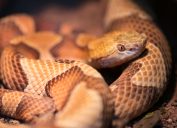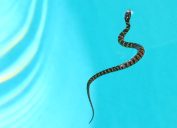Copperhead Snake Bites Are Increasing—5 Ways to Protect Yourself
Here's how you can reduce your chances of a run-in with the venomous reptile.

No one likes the idea of having a run-in with a venomous snake like a copperhead, whether it's on their property or out in nature. But thanks to higher-than-average temperatures, these reptiles have become active earlier in the year than usual, bringing an increase in sightings and bite incidents along with it.
"Copperhead snakes are common in many outdoor environments, particularly in the southern and eastern U.S.," Gene Caballero, co-founder of lawn services company GreenPal, tells Best Life. "But understand that they are an integral part of the ecosystem and usually aren't interested in confronting humans unless they feel threatened."
Fortunately, you can still keep yourself safe even if you happen to live in their habitat by following a few tips. Read on to learn ways to protect yourself from copperhead snakes, according to experts.
READ THIS NEXT: Two Copperhead Bites Reported as Snake Season Begins—Here's Where They Were Hiding.
1
Look carefully before sitting down or reaching for items while hiking or in your yard.
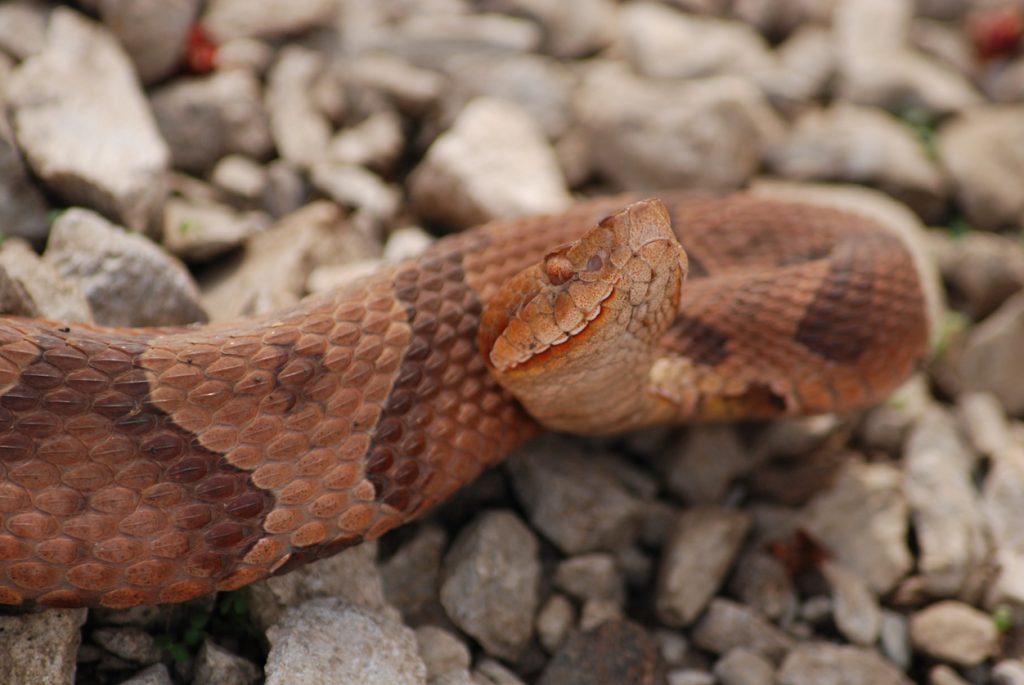
One of the trickiest parts about avoiding copperheads is that they're naturally camouflaged and can be hard to spot. But according to experts, anyone who lives in their habitat should always keep their eyes peeled when working outdoors or enjoying nature.
"When hiking or walking the dog, be sure to check under any log, rock pile, or other fallen debris before approaching or sitting down," Roger Dickens, wildlife technical services manager at Ehrlich Pest Control, tells Best Life. "Bites often occur when a human hand is mistaken for a prey species or the snake feels threatened."
2
Wear protective clothing while gardening or exploring nature.

Sometimes, even staying alert isn't enough to keep you away from all snake encounters. That's why putting on the right gear can be essential to keeping yourself safe.
"If you know you'll be outside, especially in a snake-prone area, no matter what you're doing, you should wear long sleeves, long pants, thick socks, and boots," says Ben McInerney, founder of Home Garden Guides. "It might not seem necessary at the time, but this clothing will act as essential protection against snake bites!"
Covering up your extremities can help stave off any serious damage. "Copperheads are pit vipers with relatively short fangs," says Caballero. "Wearing robust clothing can prevent them from reaching your skin."
READ THIS NEXT: Invasive 200-Pound Pythons Are Spreading in the U.S.—And Eradication "Is Not Possible."
3
Don't reach blindly into dense brush.
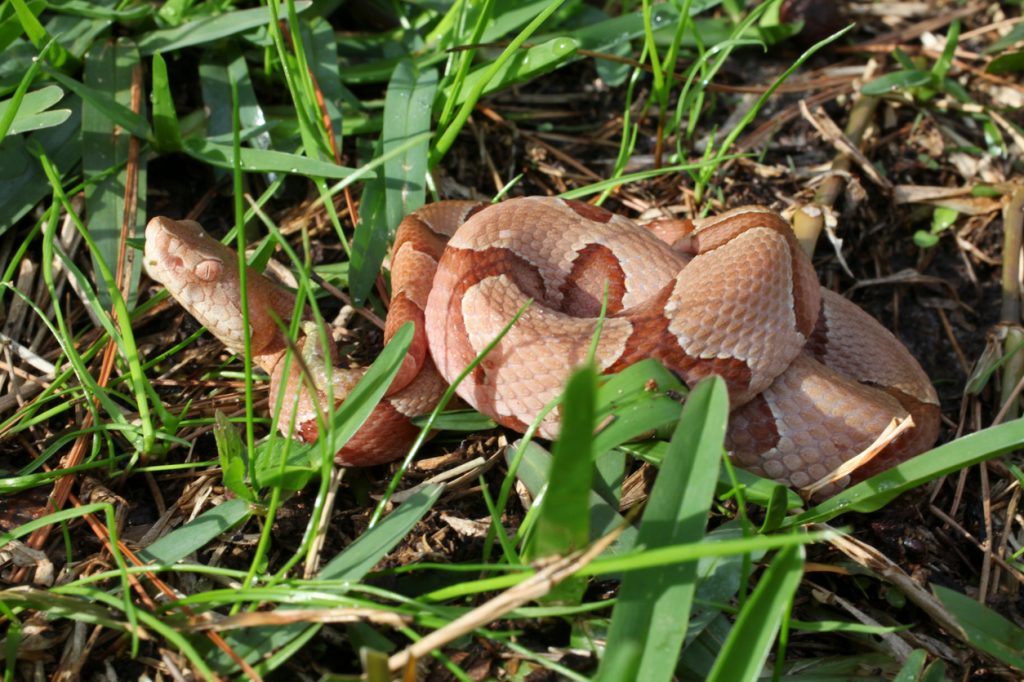
One of the most common rules for avoiding snake bites is to look carefully before you step or reach into any area where they might be hiding. This is especially true for anyone doing yardwork or trekking through thick brush.
"When working in dense foliage or areas where visibility is low, use long tools like a hoe or a stick to probe the area before proceeding," says Caballero. "This reduces the chance of accidentally stepping on a copperhead and provoking an attack."
4
Don't make your property inviting for copperheads.
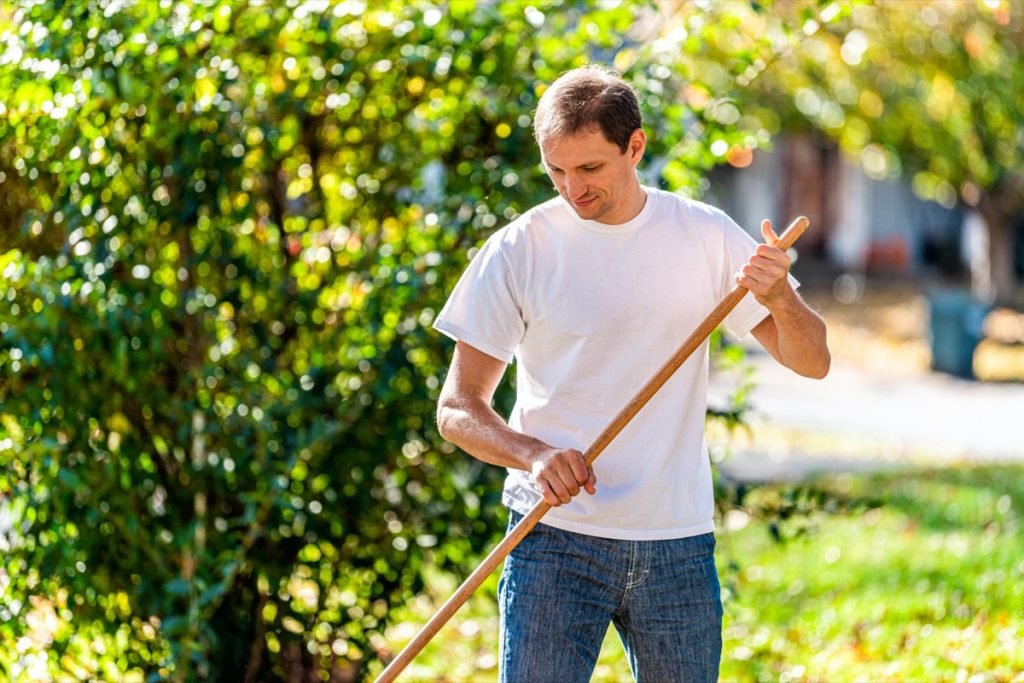
Experts have noted that copperheads have shown an impressive ability to cope with human encroachment on their territory in recent years. So if you're trying to keep your property from becoming a popular hangout for the reptiles, it's best to stay on top of yard work and keep things tidy overall.
"Snakes love to hide in tall grass, underbrush, mounds of leaves, and other debris like wood or stone piles, so it's best to avoid these types of areas altogether," says McInerney. "If it's inevitable, then make sure to tread carefully and slowly or use a tool to reach where you can't see."
For more snake advice delivered straight to your inbox, sign up for our daily newsletter.
5
Don't try to kill or capture copperheads.
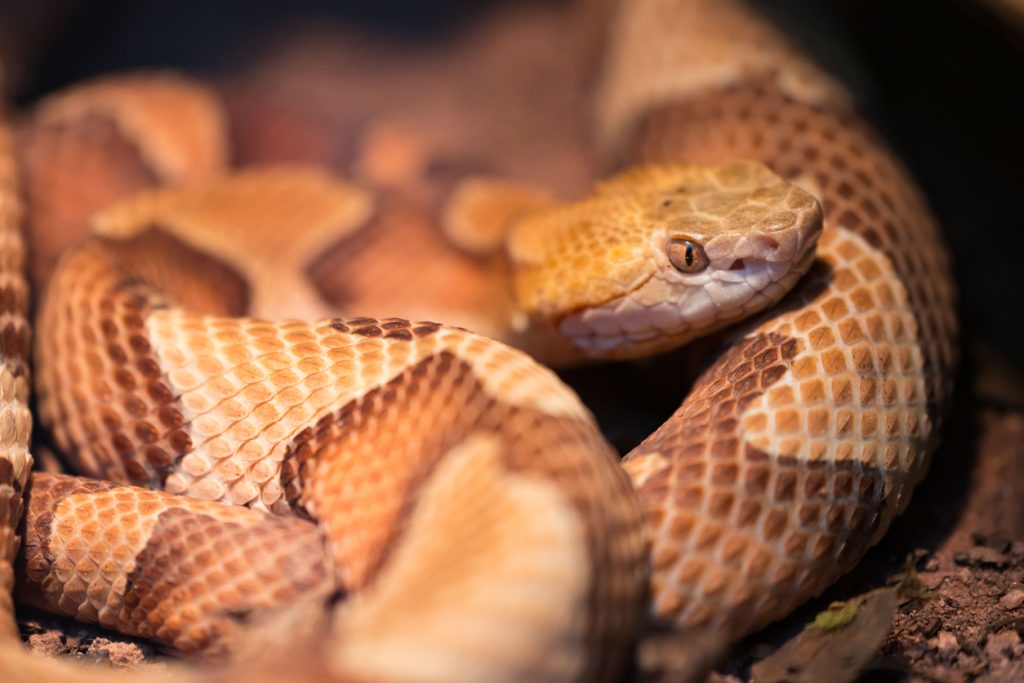
Even though they have a fearsome reputation, copperheads are still a naturally shy and non-aggressive species. That means barring any accidents or surprises, keeping your distance from them should be more than enough to keep you safe.
"If you see a copperhead, leave it alone," says Dickens. "Do not try to push it away, catch it, or disturb it. They are very fast and can strike without warning."
If you're still concerned that too many are hanging out, don't try to solve the problem yourself. Instead, Dickens suggests calling in a professional to relocate the animals in a way that's safe both for humans and the snakes involved.

